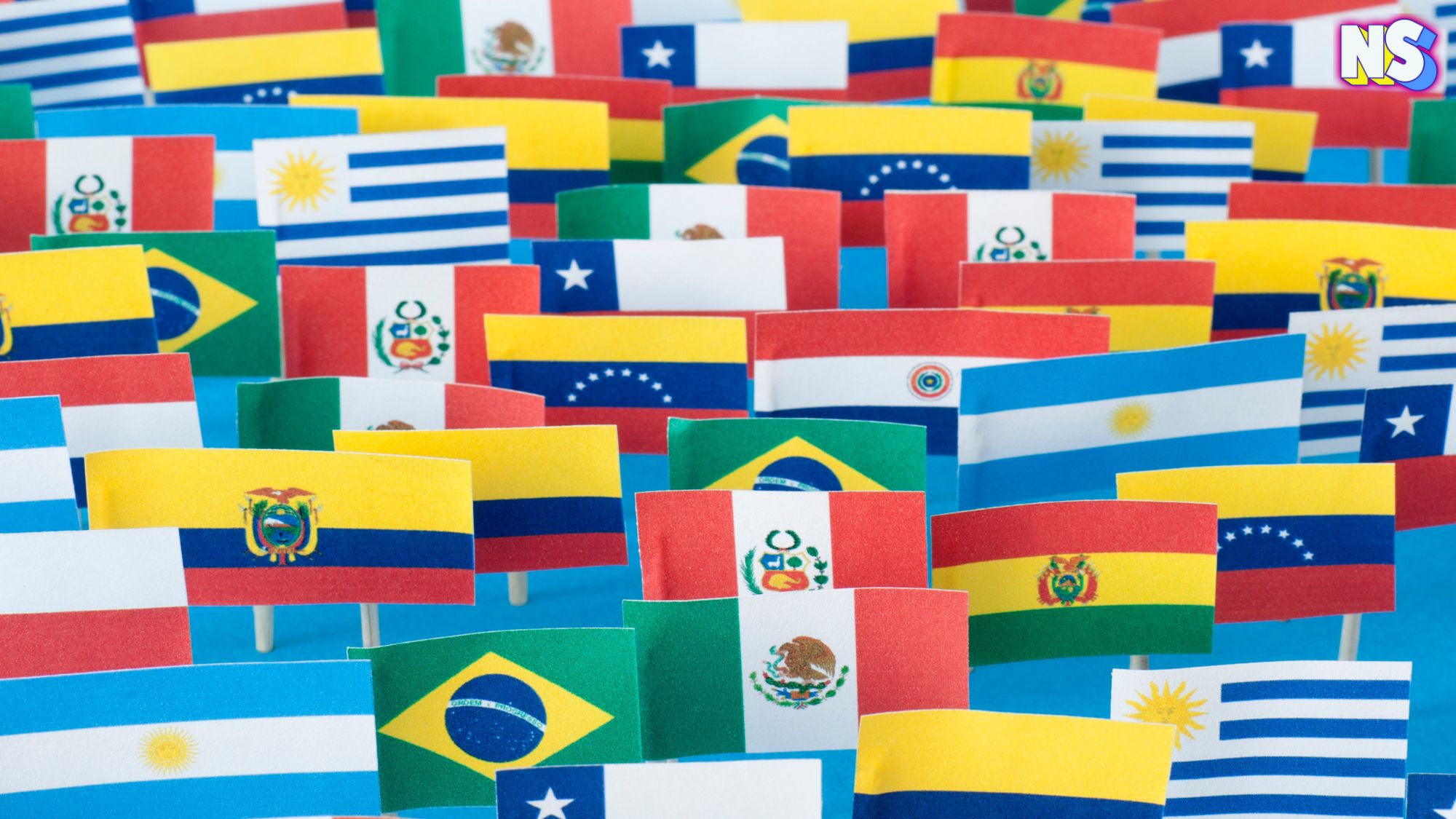It’s called Hispanic or Latino Heritage Month? Or is it Latinx Heritage Month? The answer is “Yes.” Allow me to explain.
In 1968, it was officially named “Hispanic Heritage Week,” a time set aside to recognize and celebrate Latin American culture in the United States. Then, in 1988, it was expanded to a month celebration. But, these days, the "Hispanic" part of the official label is undergoing a linguistic makeover.
Look around and you’ll find the official month called by a variety of names, using the terms Hispanic, Latino, Latinx, and even Latine interchangeably.
And, what’s the big deal, right? Like Shakespeare once wrote in his famous play Romeo and Juliet, “A rose by any other name would smell as sweet.” In this case, a month celebrating Hispanics in the U.S., under any label, is the same thing, right? Not really.
Choosing just one label to identify a population representing over 21 countries is not an easy task.
Is it Hispanic, Latino or Latinx Heritage Month?
“Choosing the term Hispanic or Latino as a source of identity is more complicated than just applying a label,” National Geographic explains. “A person whose grandparents came from Spain, a person with Indigenous Mexican heritage, and someone from a Portuguese-speaking Brazilian family — along with the roughly 19 percent of the U.S. population that might check ‘Hispanic’ on their census form — could self-identify as both Hispanic or Latino, or neither.”
When it comes to labels in our community, it’s not all a bed of roses. In fact, each label brings its own history, and sometimes controversy. So, which one is it? Hispanic, Latino, or Latinx Heritage Month? The answer is always "Yes." There's a reason why it's often "all of the above."
Creating the term ‘Hispanic’
“‘Hispanic’ comes from the Latin term for ‘Spanish,’ Hispanicus; the ancient Romans called the Iberian Peninsula Hispania,” National Geographic explains. “In the United States in the 19th century, the term ‘Hispano’ was used to describe people descended from Spaniards who settled in the Southwest in the days before American annexation. But until the 20th century, ‘Hispanic’ was mostly used to refer to things pertaining to ancient Spain.”
Then the term got a makeover by the United States government in the 1970s, when it needed a term to group the growing minority group. “ … activists began lobbying the US Census Bureau to create a broad, national category that included all these communities,” Latino USA explains.
That broad, national category was “Hispanic.”
In 1980, the term “Hispanic” was added to the Census, to replace the label assigned to most within this community, which was just “Mexican.” “Hispanics” were asked to choose from the following options: “No (not Spanish/Hispanic); Yes, Mexican, Mexican-Amer., Chicano; Yes, Puerto Rican; Yes, Cuban; Yes, other Spanish/Hispanic.”
However, many in the community were not familiar with the term itself. So, the government initiated a nationwide advertising campaign targeting the fasting-growing demographic, without a label. “The network that would later become Univision released this series of ads calling on ‘Hispanics’ to fill out the 1980 Census. The ads feature ‘Hispanic’ sports stars and … Big Bird.”
According to the Pew Center, before the 1970s and 1980s efforts, there was a one-time inclusion of a ‘Mexican’ race category in the 1930 Census, when forms were filled out by census-takers who went door to door. “The first major attempt to estimate the size of the Hispanic population for the entire nation was in the 1970 Census, in which forms were completed by residents themselves.”
Introducing ‘Latino’
By the 2000 Census, the 1980 wording was almost identical but the term “Latino” was added, counting more than 35 million Hispanics in the U.S.
“The term ‘Latino’ also came into being in the 19th century. A shortening of the word latinoamerico, or ‘Latin American,’ it was coined as a variety of former Spanish colonies declared independence around the 1850s.,” National Geographic writes. The pan-national, pan-ethnic term was a nod toward the similarities of nations once owned by Spain.”
The term did away with any confusion created by the label “Hispanic,” or so the government thought. More was needed.
With a big marketing push asking the minority population to help count its numbers, in 2010, Census added the term “origin” with the question asking whether the person is “of Hispanic, Latino, or Spanish origin.” It worked, and revealed even more than 30 million members of the U.S. Hispanic population. However, not all were content with the Census lingo.
The ‘Hispanic’ Controversy
Since its introduction, the term “Hispanic” has garnered much controversy over the years, with Author Sanda Cisneros being one of its most notable critics. "People who use that word don't know why they're using it," Cisneros, a Mexican American poet and novelist told the Washington Post in 2003. "To me, it's like a slave name. I'm a Latina."
And she wasn’t alone.
In 2003, right after the Hispanics surpassed African Americans as the largest minority group in the country, another Mexican American writer, Luis J. Rodriguez, told the Washington Post he disliked the label simply stating: " … I'm not Hispanic," he said.
Cisneros, and others over the years, saw the term “Hispanic” as a label the U.S. government created to label a diverse group of people who were not asked what they wanted to be called.
"Hispanic was never a term that everybody loved, but it was a term that got a lot of support from within Latinos in the Nixon and, later, the Ford administration," Cristina Mora, a sociologist at the University of California, Berkeley, told NPR.
To clarify the confusion between terms, the 2003 Washington Post article “Latinos or Hispanics? A Debate About Identity” gave this explanation: “Hispanics derive from the mostly white Iberian peninsula that includes Spain and Portugal, while Latinos are descended from the brown indigenous Indians of the Americas south of the United States and in the Caribbean, conquered by Spain centuries ago.”
Introducing Latinx
Today, over 20 years later, the“Latino” and “Hispanic” debate is still raging, with the term “Latinx” thrown into the ring.
The roots of the word “Latinx” itself are unknown, but, according to the University of Colorado, it first appeared on the internet in 2004, as a gender neutral term created in the Latino queer community. The problem is that, Spanish-language speakers have not embraced it as much as those in Hollywood or the media and entertainment industries.
Then there’s the term “Latine” which is also a gender-neutral form of the word Latino, like Latinx, and “created by gender non-binary and feminist communities in Spanish-speaking countries,” the University of Colorado explains.
What’s next?
For the 2030 census, the Biden Administration proposed “that each citizen can define their ethnicity as Hispanic or Latino,” according to a recent article in Bloomberg Linea. A “Hispanic or Latino” box is also being proposed under a reformatted question to identify a person’s race or ethnicity.
As of now, no changes have been proposed to alter the name of Hispanic Heritage Month itself. The time to celebrate a community representing over 20 countries and millions of American dreams remains under one official label. However, as history has proven, that may change soon, when the community it represents decides, for itself, the name that best captures its diversity and identity. What remains constant is the need to celebrate our culture and contributions of millions who proudly trace their roots to Latin America, regardless of a label.





